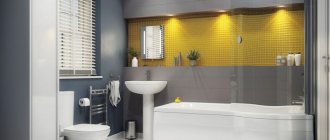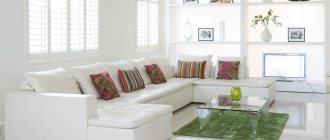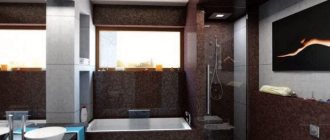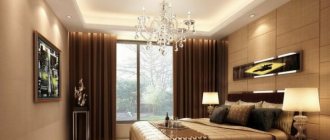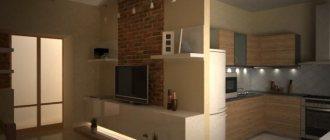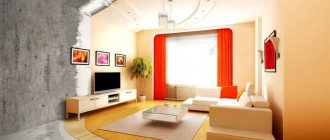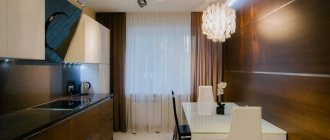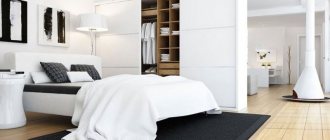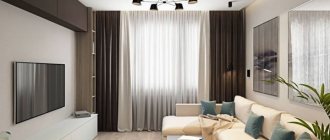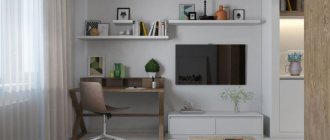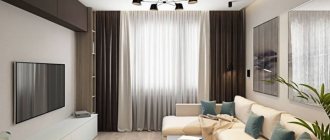Choosing brown for the living room is a classic option for organizing the interior, popular due to the wide color palette of shades that bring peace and tranquility to your home.
The surrounding atmosphere in brown tones allows you to create comfortable conditions for living and relaxing. It is important to choose the right decoration for the walls and ceiling, in harmony with the color of the furniture, as well as decorative accessories in the form of bright accents; we will consider how to do this below.
What do psychologists say about the influence of the color brown on humans?
Since ancient times, brown color has been associated with natural soil, wood, and fallen leaves. It is thanks to its proximity to the natural habitat that it gives a feeling of stability, well-being, and fertility.
As experts note, brown tone has a warming effect. It can relieve tension and stress, relax after a hard day at work, and help you forget about fatigue.
Recommended for people who periodically experience anxiety and are afraid of changes in life. A brown interior will certainly give you self-confidence, self-respect, and will encourage guests to enjoy pleasant, confidential communication.
Living room in brown tones: all the pros and cons
Rich brown color or light brown shades in the furnishings and decoration of the living room have many advantages, some of which are the following:
- A rich range of colors makes it possible to experiment with different design styles. By combining the main color with additional shades, you can create interesting individual ideas for traditional classic or modern design in a minimalist and country style.
- A brown living room with natural wood furniture looks elegant and presentable. This style of premises looks noble and is suitable for people who value quality, good quality and durability.
- The beneficial effects of the brown palette on the human body will have a positive effect on your well-being and relieve stress and tension. Unlike a bright, active color, brown will not make you feel aggressive or tired.
- The brown color is quite practical and does not stain , so you do not need to spend additional effort on cleaning.
- This color visually adds warmth , which is important for rooms whose windows face the shaded side. A light brown tone will visually expand the space, add airiness, light and harmony to the home.
Among the disadvantages, it can be noted that the use of dark chocolate tones in a small room can lead to the effect of gloom and limited space. The living room will become dull and uninteresting; to avoid this, you need to dilute the atmosphere with appropriate satellite colors, as read below.
Advice! For small rooms, rich dark brown is best paired with white. Contrasting interaction will balance the composition and visually enlarge the room. It would be appropriate to have light or cream-colored furniture or throws on the sofa and armchairs.
Types of structures
When choosing a design, it is important to take into account many nuances: find out the dimensions of the room, determine for what purpose you need a sofa. Depending on the purpose, there are two main types of structures:
- Modular. This type is good because you can choose the elements that will make up the sofa, its size and the number of seats. During use, you can change the shape of the structure as you wish, moving and combining individual elements with each other.
- Folding. This type is more compact, but no less practical. There are several types of folding structures, they are transformed in different ways. If necessary, the folding design will easily provide you with an additional sleeping place.
Both designs can be either straight or angular.
Adding secondary colors: various combination options
When drawing up a future renovation project, it is recommended to sketch out a sketch of the living room in pencil, with an approximate arrangement of furniture.
Then choose the main predominant color of surface finishing and furniture - light or dark brown, select the degree of saturation for it, from a shade of burnt coffee to light.
After this, you need to find a suitable complementary color. Let's look at which options work best with each other.
1. Brown + beige. A classic combination, laconic and simple, requiring symmetry in the composition. To achieve a balance of both colors, choose their percentage.
If beige predominates as the main color in the decoration of walls and ceilings, the floor should be darkened with darker shades of brown. This also applies to furniture; it should not be lost in the general plan.
2. Brown + white. Relevant for a small living room to increase space. The presence of white color will balance the height of the room; it is advisable to distribute it at the top, and brown at the bottom. This ratio will create a homely family atmosphere full of comfort and tranquility.
3. Brown + grey. Two neutral colors of a dark tonality can suppress each other, so you need to make one of them three tones lighter. Using bright accents or colorful furniture will make up for the lack of energy, activity and liveliness that is missing in a taupe living room.
4. Brown + green. A universal option for active, interesting people, close to a natural, natural combination by analogy with nature. A compatible color with any brown palette is apple green, muted greens or olive.
Children's
A lot of brown color in a children's room is contraindicated. Light shades are suitable for a child's perception. Therefore, focus on the dominance of white. In a boy's room, don't forget to add blue as an accent color, and in a girl's room, pink is a must. Blue and pink colors will create a childish atmosphere that the child will like. It is better to choose a bed for a child in white. The bedspread can be of any other shade, with drawings and patterns. The brighter and more original the children's room, the more interesting it is.
How to tastefully choose furniture for a brown living room?
The use of natural wood for furniture in light or dark colors emphasizes the nobility and luxury of the chosen interior.
A chocolate-colored leather sofa looks attractive in the living room.
A soft pouf or cream armchair will emphasize the dignity of the sofa and help avoid bulkiness. For cabinets, walls and large items, it is better to choose light and cream colors so as not to overload the decor.
Choosing curtains for the living room
Curtains and curtains can liven up a calm, neutral environment when you choose bright colors and balance them with the rest of the decorative elements in your living room.
It is important to correctly determine the texture of the fabric, the shape of the curtains and the shade that best suits the setting. If you decide to make the curtains dark and heavy, be sure to hang snow-white tulle, and also highlight the area next to the window with bright decor, such as a painting or a framed photo.
Brown living room appliances: what to look for when choosing?
A stylish interior implies the presence of modern equipment in the living room, the color of which should fit into the overall decor, combining with the overall picture of the room.
It is better to choose light or cream surfaces of devices. In other cases, it will be appropriate to decorate the space around it with bright accents.
The brown color scheme is ideal for the living room, creating a unique homely atmosphere in the room. It will add a special atmosphere of coziness and comfort to the room, smooth out misunderstandings in the family, and set the mood for further action. In combination with another color, you can create original images of design. Make any of your interior fantasies come true and enjoy cozy, quiet family evenings.
Advantages
Decorating a living room in light shades has a lot of advantages:
this technique allows you to visually beat the lack of space, which is especially important in small-sized rooms;
Light colors used to create the interior allow you to create different mixes of the texture of finishing materials. They are not limited in the choice of bright contrasts, they provide a wide range of shades, emphasizing strokes, each time changing the visual perception along with replacing the shade of small furnishing elements, for example, furniture covers, capes, sofa pillows, carpeting, wall lamp decor, painting designs.
